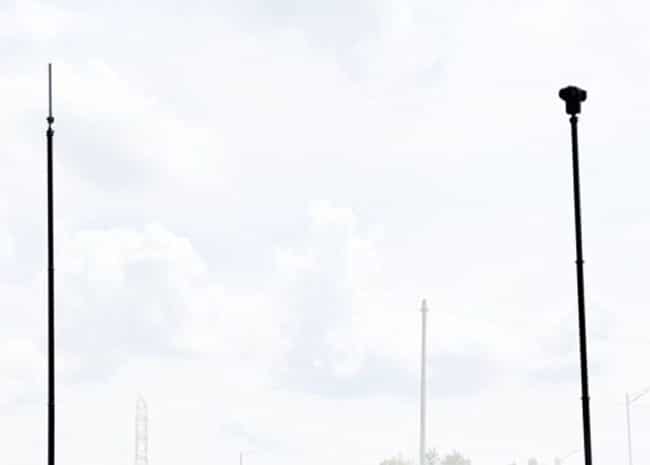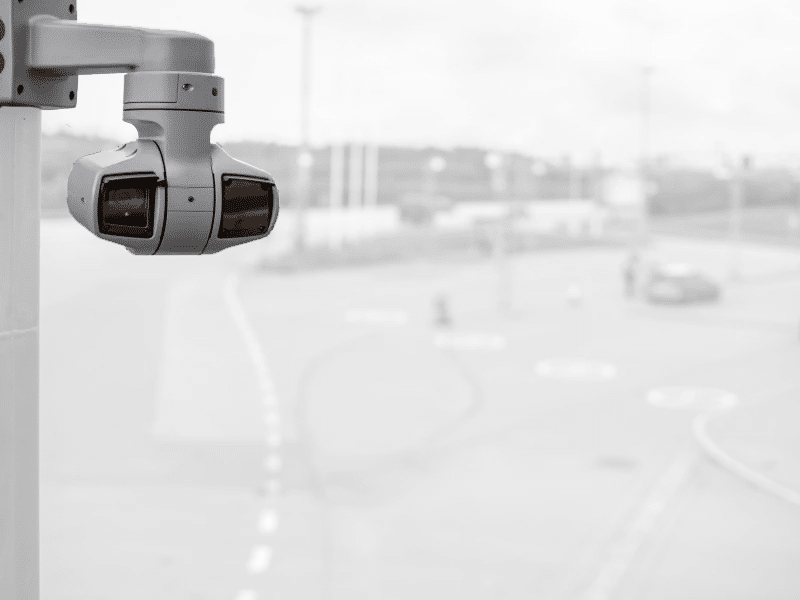Maximize Surveillance and Connectivity with Telescopic Masts
 A telescoping or telescopic mast is an upright pole or portable tower that consists of tubular sections that slide within another in order to be extended or retracted pneumatically or manually. Telescopic masts can be made from a variety of materials including aluminum, steel or carbon fiber depending upon the application, mission requirements and can be mounted any number of ways including a vehicle’s 2×2” hitch receiver, building or command center wall, freestanding tripod, on a mobile surveillance vehicle or trailer, folded down on a roof and even through a hole in the roof via a roof bearing!
A telescoping or telescopic mast is an upright pole or portable tower that consists of tubular sections that slide within another in order to be extended or retracted pneumatically or manually. Telescopic masts can be made from a variety of materials including aluminum, steel or carbon fiber depending upon the application, mission requirements and can be mounted any number of ways including a vehicle’s 2×2” hitch receiver, building or command center wall, freestanding tripod, on a mobile surveillance vehicle or trailer, folded down on a roof and even through a hole in the roof via a roof bearing!
Telescopic masts are invaluable in various fields, including emergency response, broadcasting, telecommunications, and security. For first responders, these lightweight masts provide elevated viewpoints for better situational awareness, enabling quicker and more effective decision-making during crises. In broadcasting, they ensure reliable signal transmission even in remote locations. Telecommunications companies benefit from enhanced coverage and signal strength, crucial for maintaining communication networks.
For more specialized applications, like extending the range for drone operations or thermal imaging, telescopic masts provide stable platforms that can support advanced equipment. They are also equipped with pneumatic systems for quick extension and retraction, using either manual or electric pumps. This rapid deployment is critical in time-sensitive situations.
For example, The Rapid All-Terrain Tower (aka The RATT) is a flexible mobile tower system that employs a pneumatic telescopic mast system made from high-strength aluminum in order to keep it lightweight (under 100lbs), simple and rapidly deployable for law enforcement mobile video surveillance (special events), tactical surveillance, 360-degree situational awareness, investigations, AI, LPR, video analytics (face, appearance & object search), firefighting to see smoke/hotspots with a thermal camera, monitoring large public events, crime scene surveillance/deterrent, radio/Wi-Fi/mobile repeater antenna, long-range acoustic devices, construction site video security, edge network applications, UAV/drone detection, UAV/drone antennas, 3D laser scanners and more.
How high can I get a Telescopic Mast?
Lightweight telescopic masts typically range in size from 10-50 feet and some versions even have “lockable collars” that keep the mast extended for longer deployments and also can reduce or restrict the extended height as needed for special applications such as AI, LPR, facial recognition or other end uses. Any applications requiring high-precision or elevating beyond 33 feet should be properly guyed in most cases. All masts have a wind speed or wind survival rating based upon extended height, mast material, mast diameter, how it is mounted, the payload or head load and lastly, whether it’s guyed or not.
How are pneumatic Telescopic Masts extended?
https://www.criticalts.com/wp-content/uploads/2020/06/IMG_1586_Sharps-Ridge_9-2022.mov
Pneumatic telescopic masts use air pressure to quickly extend and retract the mast. Hand pumps, foot pumps and electric compressors are typically used to raise and lower pneumatic telescopic masts. The RATT can be controlled via the standard hand pump or the optional 12/24v DC electric compressor both which will elevate and retract The RATT in under 3 minutes for many field applications.
If you’re looking for a more budget-friendly portable mast system, there are manual push-up masts out there as well as the traditional winch-based masts. Here at Critical Tech Solutions, we’re focused on speed and ease of deployment so we only provide pneumatic masts!
Quick time-lapse video showing how The RATT mast elevates + retracts…(Actual elevation takes 2-3 minutes & less than 60 seconds to retract)
What devices can I put on top of a Telescopic Mast?
Telescopic masts are primarily used with RF antennas to improve radio coverage (antenna masts) or dead spots and with cameras as well to fill in blind spots (mobile surveillance towers). Other notable end-uses are mobile video surveillance, situational awareness & thermal imaging, radio devices including RF antennas, cellular signal boosters, outdoor WiFi access points, edge networks and many more.
Depending upon the height, material and diameter of the telescopic mast, weight limits for the top, payload or head load typically do not exceed 49 lbs for rapid deployment masts. However, there are heavier-duty telescopic masts available for special order that can manage payloads in excess of 100lbs.
Do I have to use guying or guy wire with a Telescopic Mast?
It is strongly recommended that you follow the manufacturer’s specifications and guidelines as mast loading, overall height and weather conditions greatly affect performance. Generally speaking, The RATT is safe to operate without guying under 30 MPH winds. Custom Finite Element Analysis (FEA) studies can be generated to predict how your specific RATT deployment reacts to real-world forces and other physical effects. The FEA study shows at what point The RATT telescoping mast will break or work as designed.
Want to learn more about how we can help? Feel free to get in touch with us today to see what we can help speed up your next deployment.
Can I Deploy a Mast or Tower on uneven ground or unpaved surface?
Yes, it is 100% possible to deploy a portable tower on uneven ground! We understand that not all deployments will be on a perfectly level & paved surface so we developed our Hitch-Mounted RATT that can adjust 44° vertically (22° either direction from center) + weighs less than 100lbs to solve this problem. In under 5 minutes, most agencies can turn their hitch-equipped vehicle into a mobile command post and get an RF antenna over 30 feet to improve P25 or analog conventional radio coverage.







